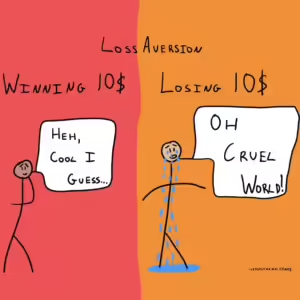Balancing Innovation and Buyer Resistance and The Role of Loss Aversion
One key step in balancing the desire to innovate and introduce new features with the need to address buyer resistance is fully understanding the scale of the behavior change required for adoption. If the behavior change is too large then the product’s life span will fall into the long haul category and more patience will be required when waiting for product adoption. If it is at all possible to lower the behavior change this would also help speed up the process. One quick way to do this is to target the unendowed. These individuals have not started up conflicting behaviors due to lack of great experience with an alternative product. You could also target those who already want to give up their old habits or just value them very lightly. The article talks of companies targeting environmentally conscious consumers who highly value the gains of sustainable innovation while being lightly attached to the current solution.

Additionally, loss aversion plays a significant role in buyer resistance. Consumers tend to irrationally overvalue the benefits they already possess due to the endowment effect, where the pain of losing an existing product is greater than the pleasure of gaining a new one. This leads to heightened resistance to change, with studies showing that people demand two to four times more compensation to give up what they already own than they would be willing to pay for the same item. Thus, product managers may need to offer benefits that are several times greater than perceived losses to overcome this resistance. This is why the harder strategies to invoke require a lot of power: the 10x improvement and elimination of the old. With a 10x improvement over current products, the 9x overvaluing combo will be overpowered and consumer resistance will be trumped. This requires huge innovation like the MRIs compared to the X Rays. The other option of elimination is most likely less plausible. It involves removing the alternative product entirely. This requires some control over the alternative product (or a good lawyer and a lawsuit!). In the end, whether you are targeting those more receptive, leveraging significant breakthroughs or eliminating alternatives, it can still be an unforgiving and frustrating process.
Controlling Feature Creep

Steve Jobs once said that focus is about saying no to good ideas, and that innovation is about saying no to 1,000 things. This is the big idea behind controlling the Frankenstein effect that “Feature Creep” has on products. To effectively manage feature creep, product managers must strike a balance between innovation and maintaining the product’s core value. Feature creep, driven by well-intentioned demands from sellers or stakeholders, can quickly lead to increased development costs, complexity, and a diluted focus. To avoid these problems, product managers should begin by defining a clear product vision and scope, ensuring the team remains focused on tying every solution back to a user’s needs. You don’t want to overwhelm your user with things they won’t use. This can be paired with implementing a formal feature review process, considering phased rollouts, and leveraging data-driven insights to ensure that only valuable, impactful features make it to the final product. By sticking to these strategies, product managers can protect their product against feature creep, delivering a user-friendly product that supports long-term success.
